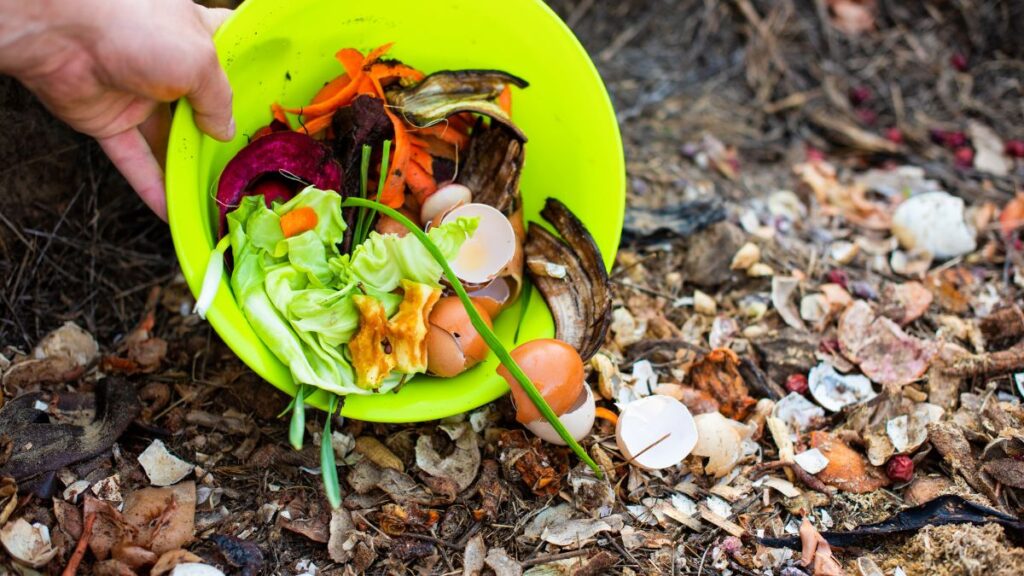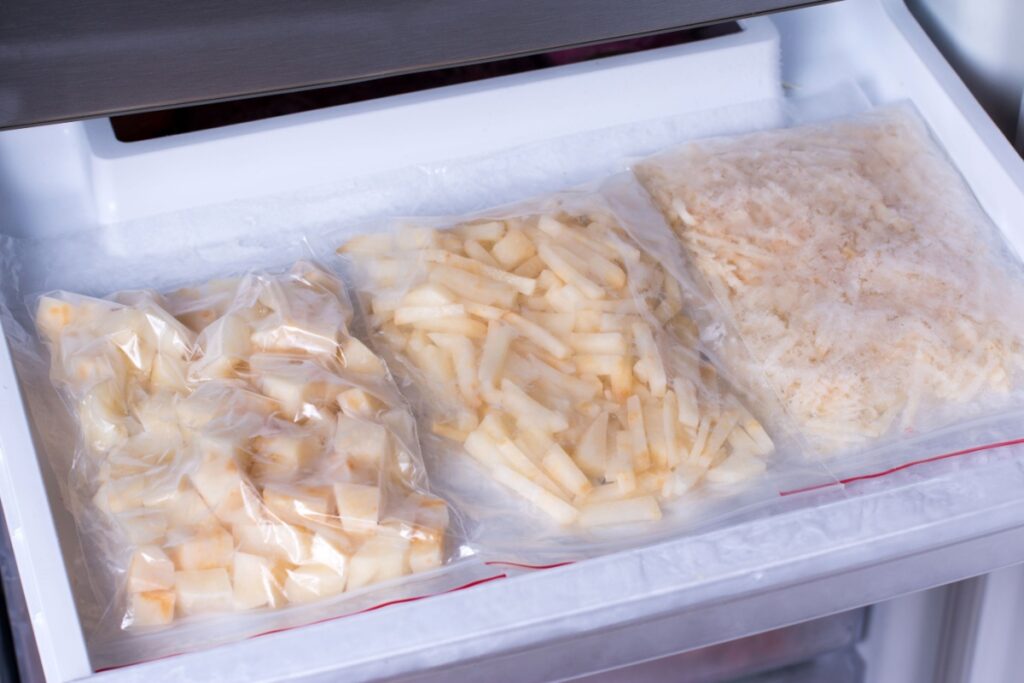Sustainability on Your Plate: 16 Tips for Waste-Free Cooking
Sustainability starts in the kitchen, and cooking with a waste-free mindset is one of the best ways to help the planet while saving money. Every year, millions of tons of food are wasted, contributing to environmental harm and economic loss.
By learning how to make the most of your ingredients and minimize waste, you can play a small but important role in reducing your carbon footprint. Waste-free cooking isn’t just about avoiding trash—it’s about respecting the resources that go into the food we eat. Here are 16 practical tips to help you cook sustainably and waste less food at home.
Plan Your Meals

Meal planning is one of the simplest ways to avoid food waste. By creating a menu for the week, you can shop with purpose and avoid buying items you won’t use. Stick to recipes that use overlapping ingredients to ensure nothing goes to waste.
Before heading to the store, check your pantry and fridge to see what you already have. This helps you avoid duplicates and ensures older items get used first. A thoughtful meal plan can save money and make cooking more efficient.
Buy Only What You Need

Buying in bulk may seem like a good idea, but it can lead to waste if you don’t use everything before it spoils. Instead, purchase smaller quantities of perishable items like fresh produce, dairy, and bread.
For bulk items like grains or nuts, consider shopping at stores that allow you to buy just the amount you need. This reduces waste and keeps your pantry organized. Make a shopping list and stick to it to avoid impulse purchases that might go unused.
Store Food Properly

Proper storage can significantly extend the shelf life of your food. For example, keep leafy greens in a damp paper towel to prevent wilting, and store onions and potatoes in a cool, dark place.
Use airtight containers for dry goods to keep them fresh and prevent pests. Label leftovers with dates so you know when they need to be eaten. Learning how to store each type of food correctly can save you money and reduce spoilage.
Get Creative With Leftovers

Leftovers don’t have to be boring. Use last night’s roasted vegetables in a soup, or turn leftover rice into fried rice. Repurposing food keeps it exciting and prevents waste. If you have small portions of various ingredients, combine them into a stir-fry or salad.
Freezing leftovers is another great option if you’re not ready to eat them right away. The key is to think of leftovers as ingredients rather than scraps.
Embrace “Ugly” Produce

Many fruits and vegetables are discarded because they don’t look perfect, even though they taste just as good. Embrace produce with blemishes, odd shapes, or bruises—they often cost less and work perfectly in cooked dishes.
For example, use overripe bananas for baking or smoothies, and turn slightly soft tomatoes into sauces. By buying imperfect produce, you’re reducing waste while saving money. It’s a win for your wallet and the environment.
Use Every Part of the Vegetable

Many parts of vegetables we usually throw away are perfectly edible. Carrot tops can be turned into pesto, broccoli stems can be sliced for stir-fries, and potato peels can be baked into crispy snacks.
Stems, leaves, and peels are often packed with nutrients, making them a healthy addition to your meals. If you can’t use them immediately, save them in the freezer to make vegetable stock. This practice makes the most of your food and reduces kitchen waste.
Make Homemade Stock

Vegetable scraps, meat bones, and herb stems are perfect for making homemade stock. Save these items in a freezer bag until you have enough to simmer into a flavorful broth.
Homemade stock is versatile and can be used in soups, sauces, and grains. It’s a great way to use up scraps that would otherwise go in the trash. Plus, it’s healthier and cheaper than store-bought versions.
Compost Scraps You Can’t Use

Not all food waste is avoidable, but you can compost scraps like coffee grounds, eggshells, and vegetable peels. Composting turns organic waste into nutrient-rich soil that can be used in gardening.
If you don’t have a backyard, consider countertop compost bins or community compost programs. This ensures even unavoidable waste goes to good use. Composting completes the sustainability cycle in your kitchen.
Freeze What You Can’t Finish

Freezing is an excellent way to preserve food that’s close to spoiling. Many items, from bread and berries to herbs and meats, freeze well and can be used later. For example, freeze leftover herbs in olive oil or chop up vegetables and store them for soups and stews.
Label and date your frozen items to keep track of what you have. A well-stocked freezer can help you avoid unnecessary trips to the store.
Rethink Expiration Dates

Expiration dates can be misleading and often lead to unnecessary food waste. “Best by” or “sell by” dates are often just suggestions for peak quality, not safety. Use your senses—smell, taste, and appearance—to determine if food is still good.
Many items like canned goods and dry pasta last much longer than their printed dates suggest. Understanding expiration labels can save you money and prevent waste.
Preserve Seasonal Produce

Preserving seasonal fruits and vegetables ensures you can enjoy them year-round. Canning, pickling, and drying are traditional methods to extend the life of fresh produce.
For example, pickle cucumbers, dry apple slices, or can tomatoes for sauces. Preserving is not only waste-free but also a fun and creative way to experiment in the kitchen. Plus, homemade preserves make thoughtful gifts.
Cook in Batches

Batch cooking allows you to use up ingredients before they spoil and provides ready-to-eat meals throughout the week. Cook large quantities of dishes like soups, stews, or casseroles and portion them into containers.
This saves time and reduces the temptation to order takeout, which often comes with packaging waste. Freeze extra portions for future use. Batch cooking is a practical way to stay organized and waste-free.
Avoid Single-Use Kitchen Products

Plastic wrap, paper towels, and disposable containers contribute to kitchen waste. Instead, invest in reusable alternatives like beeswax wraps, cloth napkins, and glass storage containers.
These items may cost more upfront but save money in the long run. They’re also better for the environment and make your kitchen more sustainable. Small changes in daily habits can make a big difference.
Grow Your Own Herbs

Growing herbs at home reduces waste and ensures you always have fresh ingredients. Herbs like basil, mint, and parsley can thrive in small pots on your windowsill.
This eliminates the need to buy large bunches that often go bad before you can use them. Clip only what you need, and watch your plants grow back. It’s an easy and sustainable way to enhance your cooking.
Share Excess Food

If you’ve cooked more than you can eat, share with friends, family, or neighbors. Many communities have food-sharing programs or apps that connect people with surplus food.
Donating non-perishable items to food banks is another option to reduce waste. Sharing food builds connections and ensures nothing goes to waste. It’s a generous and sustainable practice.
Evaluate Your Waste Regularly

Take time to reflect on what you’re throwing away and why. Are certain ingredients consistently going bad before you use them? Adjust your shopping and cooking habits based on what you learn.
Keep a “waste log” to identify patterns and areas for improvement. Being mindful of your waste helps you stay committed to your sustainability goals.
Stock Up On Before Winter Price Hikes

As winter draws near, temperatures rise, as do grocery prices. The colder months often bring higher food costs due to increased demand, supply chain challenges, and seasonal shortages. To avoid the shock of winter price hikes, stock up on certain pantry staples and essential items.
15 Grocery Items to Stock Up On Before Winter Price Hikes
15 Budget-Friendly Foods to Stretch Your Paycheck

Living paycheck to paycheck can be challenging, especially when it comes to affording nutritious food on a tight budget. However, many affordable and nutrient-rich foods can help stretch your dollars without sacrificing your health.







